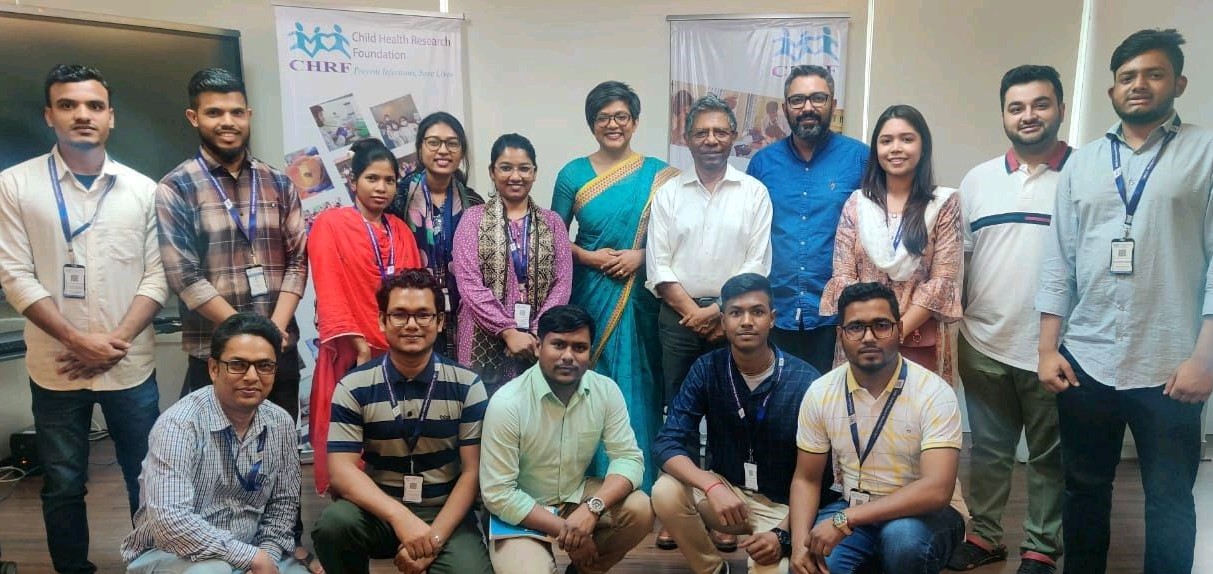
The Child Health Research Foundation (CHRF) recently wrapped up the field work of the groundbreaking two-year project, funded by the Bill and Melinda Gates Foundation, aimed at tackling one of today’s most pressing public health challenges: Typhoid. The project, titled “Bacteriophage and the Spread of Drug-Resistant Salmonella Typhi,” ran from January 2023 to December 2024 and took a unique approach to typhoid surveillance across Bangladesh.
A nationwide mission
The project’s goal was ambitious: to study the prevalence of Typhi-specific bacteriophages (viruses that infect bacteria) as a strategy for identifying typhoid hotspots. To accomplish this, CHRF’s field teams spread across Bangladesh, focusing on the most urbanized regions in all 64 districts. Over two years and four rounds of environmental surveillance, more than 10,000 samples were collected from the sewage network.
The team behind the mission
Environmental surveillance is beyond just data collection; it’s about the passionate people behind the efforts. CHRF’s field teams worked tirelessly in challenging conditions, battling scorching heat waves and heavy monsoon rains. Their efforts required meticulous coordination, with samples collected across districts and promptly sent to CHRF’s laboratories for real-time analysis.
Behind the scenes, laboratory researchers worked with equal dedication, ensuring the samples were processed efficiently and accurately. Even the local community played a part—rickshaw pullers and courier workers ensured safe transportation of samples, helping the team to reach destinations and even capture photos for the journey’s documentation.
Mapping the future of typhoid research
Why is this important? Typhoid fever remains a significant public health threat in Bangladesh, especially as antibiotic-resistant strains become increasingly common. Bangladesh is set to introduce a vaccine to reduce the prevalence of typhoid, and this project promises to deliver crucial data on where the vaccine is most needed. By mapping typhoid fever trends, the project’s findings will highlight areas in need of focus and shed light on underlying causes of typhoid transmission, further advancing global understanding of this disease.
The implications of this project reach far beyond Bangladesh. Its methodologies and insights could serve as a model for other countries dealing with similar challenges related to drug-resistant diseases. Through the collaboration between researchers, field workers, and local communities, this project creates a strong framework for addressing public health challenges and shaping long-term solutions to improve health outcomes globally.
